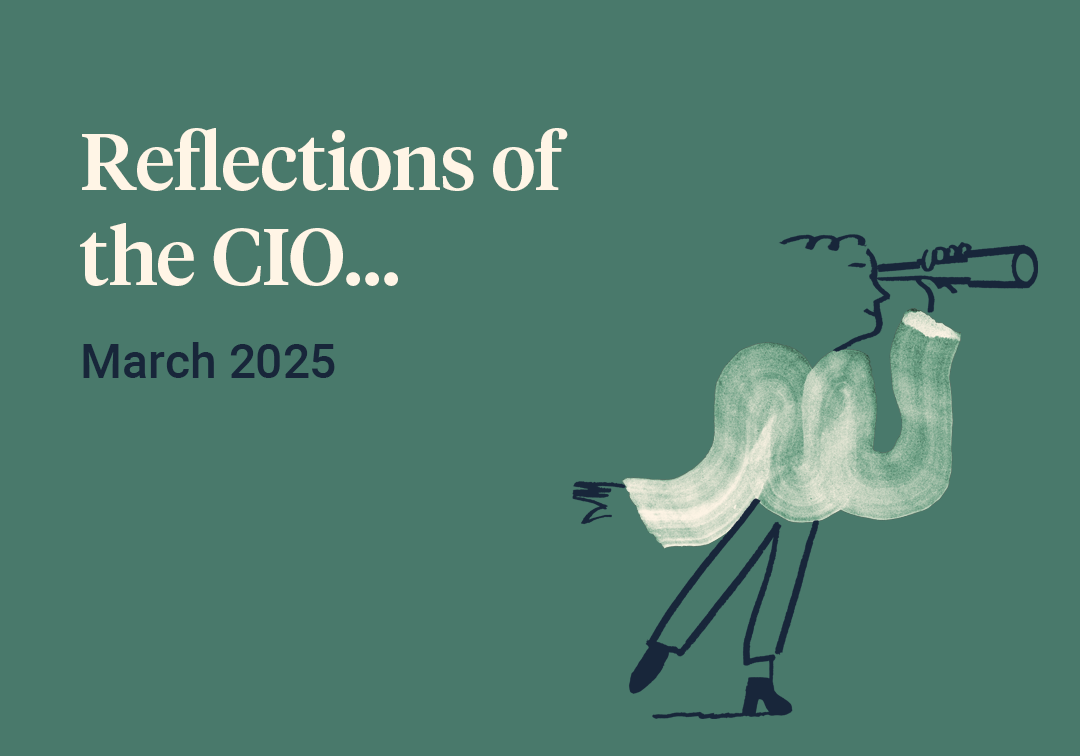A noisy and volatile summer was brought to a close in August on a broadly positive note, but only after another period of wild swings in sentiment and market performance. The month began badly as the knock on effects of a Japanese interest rate rise and weak(ish) US economic data continued to ripple though equity markets. Overconfident and over leveraged investors dramatically scaled back their positions as sentiment reversed on the perception of increasing risks to global growth.
The chill in the air as we exited summer and moved into autumn was palpable and marked a notable shift away from previous years’ worries, which almost exclusively focussed on the issue of bringing down inflation. That battle was and is now seen to be largely over, allowing attention to focus on the cost of victory. “Have central banks achieved their inflation goals without the need for a recession to bring down prices?”, was now the key unanswered issue on investors’ minds.
As this debate raged throughout August there were many sharp movements within and between asset classes. Commodities, apart from gold, were generally very weak, reflecting the general cooling in the economic climate and the specific worries over China, which is continuing to wrestle with the effects of a property market crash. Equity markets internally began to rotate their leadership groups. A cooling in the previous six months’ enthusiasm over artificial intelligence themes prompted some aggressive profit taking in the technology sector and a corresponding pick up in the relative performance of more stable, defensive type sectors. Previous months’ winners quickly became losers as profits were first booked, then rotated into sectors with lower expectations priced in.
Do you need help managing your investments?
Our team can recommend an investment strategy to meet your financial objectives and give you peace of mind that your investments are in good hands. Get in touch to discuss how we can help you.

Global bond investors rapidly began to raise their expectations surrounding the timing and extent of interest rate cuts, particularly in the USA. The Chair of the Federal Reserve confirmed later in the month they were right to do so, when he explicitly stated that the “time has come” for a change in policy. The small catch in this otherwise long hoped for signal was that the timing and pace of a reduction in rates would remain data dependent, i.e. a strong indication that markets would continue to be held in thrall to monthly data releases. The end of an extraordinary period of policy intervention was in sight over the next few months, but we aren’t quite there yet. Markets gave two cheers for this message and ended the month on a positive note, but also with a modest undercurrent of uncertainty.
Putting together the multiple events of the last month and of summer as a whole, we still end up thinking that the outlook is one where the glass is half full, rather than half empty. Very soon the developed world will be well into a synchronised interest rate cutting cycle, most likely against a backdrop of still positive economic growth. This scenario is strong medicine for risk assets and goes a long way towards offsetting the event risks in political and economic activity.
Interestingly, stock and bond markets now appear to be negatively correlated – with bond rallies helping to offset the effects of stock market falls. This feature, alongside the attraction of alternative assets where appropriate, helps us to keep taking investment risk in your portfolios, whilst simultaneously being able to diversify that risk. Of all the investment rules we have come to learn in our careers, the benefit of diversification is by far the most effective tool we have at our disposal, and we will lean hard on it as we navigate the final months of an eventful year.
Do you need help managing your investments?
Our team can recommend an investment strategy to meet your financial objectives and give you peace of mind that your investments are in good hands. Get in touch to discuss how we can help you.

Article sources
Editorial policy
All authors have considerable industry expertise and specific knowledge on any given topic. All pieces are reviewed by an additional qualified financial specialist to ensure objectivity and accuracy to the best of our ability. All reviewer’s qualifications are from leading industry bodies. Where possible we use primary sources to support our work. These can include white papers, government sources and data, original reports and interviews or articles from other industry experts. We also reference research from other reputable financial planning and investment management firms where appropriate.
The views expressed in this article are those of the Saltus Asset Management team. These typically relate to the core Saltus portfolios. We aim to implement our views across all Saltus strategies, but we must work within each portfolio’s specific objectives and restrictions. This means our views can be implemented more comprehensively in some mandates than others. If your funds are not within a Saltus portfolio and you would like more information, please get in touch with your adviser. Saltus Asset Management is a trading name of Saltus Partners LLP which is authorised and regulated by the Financial Conduct Authority. Information is correct to the best of our understanding as at the date of publication. Nothing within this content is intended as, or can be relied upon, as financial advice. Capital is at risk. You may get back less than you invested. Tax rules may change and the value of tax reliefs depends on your individual circumstances.
Related blog posts
About Saltus?
Find out more about our award-winning wealth management services…
Winner
Best Wealth Manager
Winner
Investment Performance: Cautious Portfolios
Winner
Top 100 Fund Selectors 2024
Winner
Best Places to Work 2024
£8bn+
assets under advice
20
years working with clients
350+
employees
97%
client retention rate


